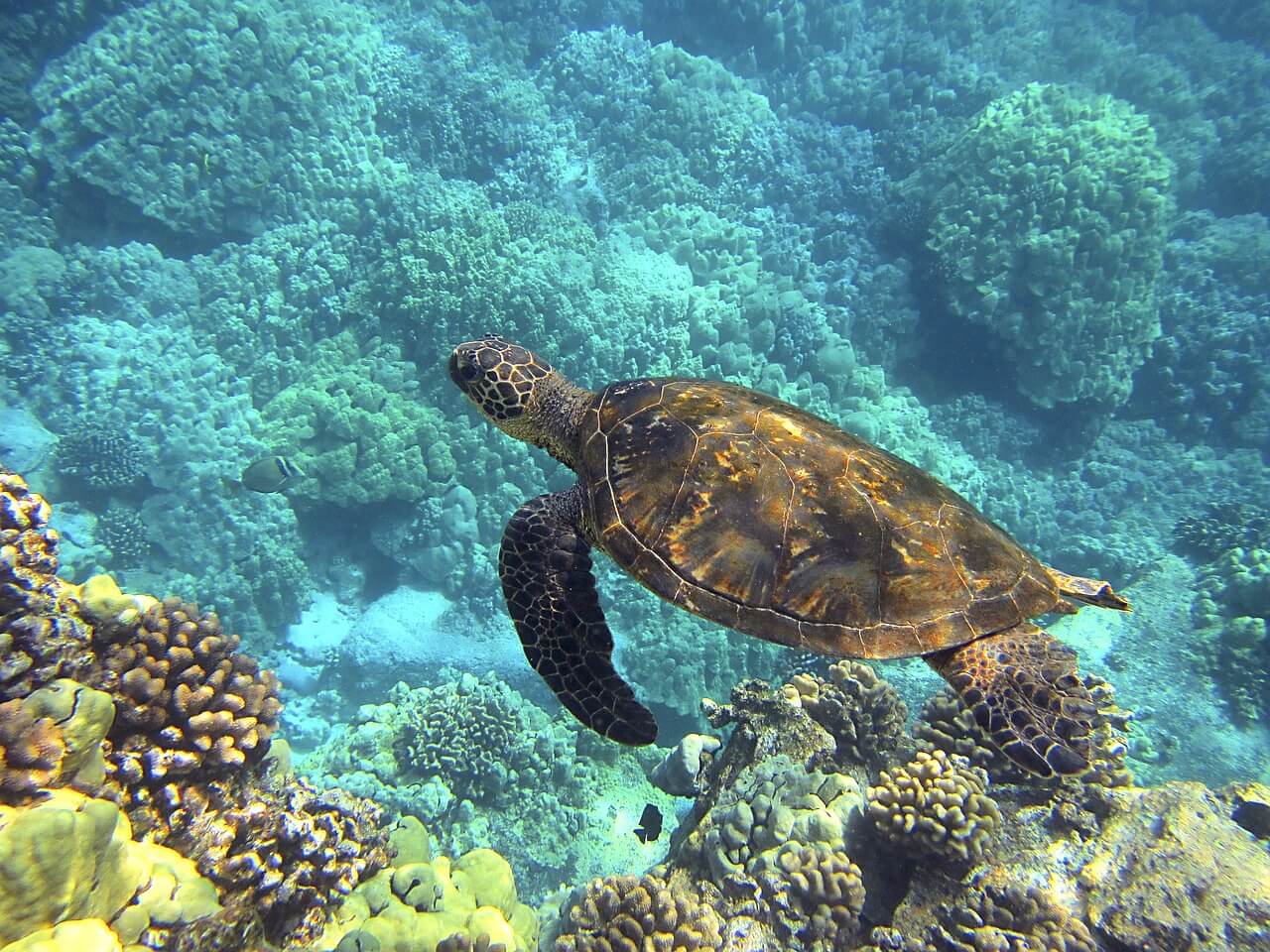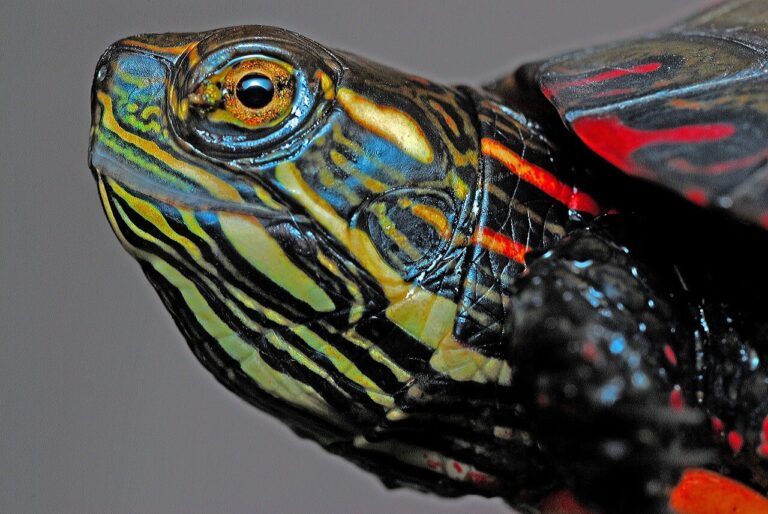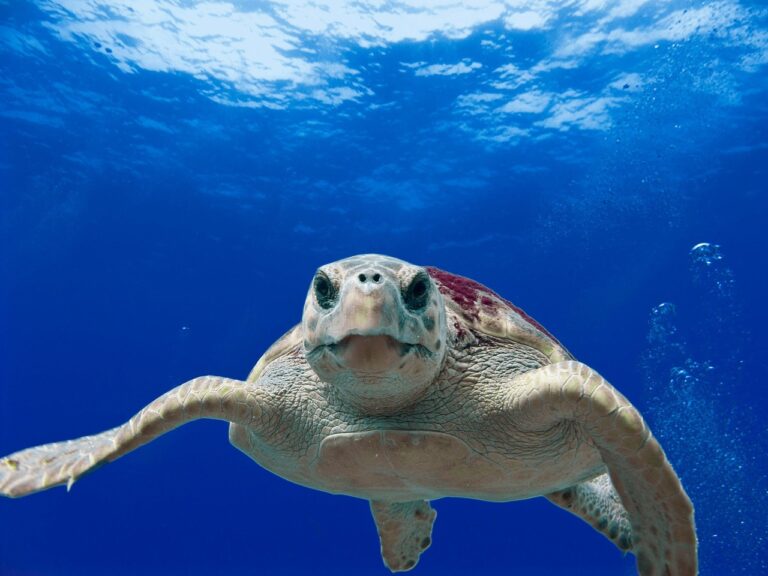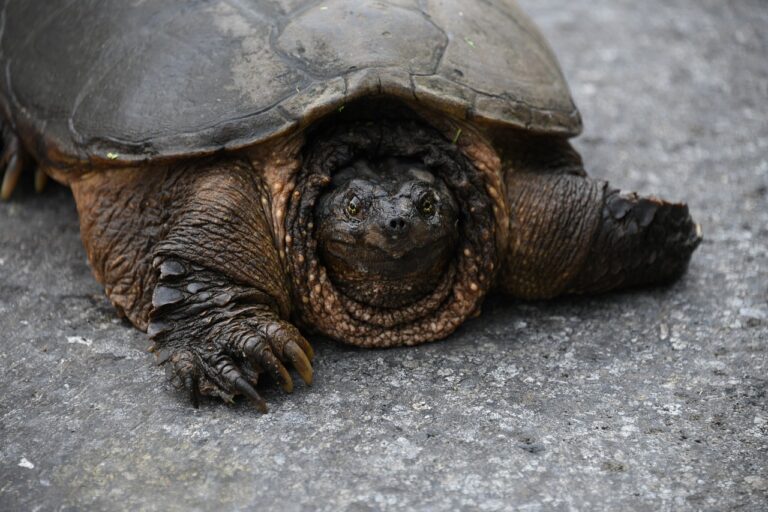Within the vast oceans of our world, there exists a creature of remarkable grandeur—the leatherback sea turtle. Not only is it the largest turtle on Earth, but it also possesses a unique distinction among its marine kin. Unlike its scaled and hard-shelled counterparts, the leatherback boasts an intriguingly tough, rubbery skin, from which it draws its name. Remarkably, this ancient marvel has held its form since the time of the dinosaurs, a living testament to the enduring wonders of evolution.
Yet, the leatherback’s extraordinary attributes do not stop there. These magnificent creatures are masterful travelers, embarking on epic migrations that span over 10,000 miles each year as they journey between their nesting and foraging grounds. They are accomplished divers as well, descending to depths unparalleled in the marine world, with some recorded dives plunging nearly 4,000 feet—a feat that surpasses the capabilities of most marine mammals.
The leatherback turtle’s global presence is unparalleled in the reptile kingdom, with their nesting sites predominantly gracing tropical and subtropical beaches. However, their once-thriving populations, which once spanned every ocean save the Arctic and Antarctic, are now in perilous decline. These magnificent beings face threats both on the shores where they nest and in the vast marine expanse they call home. Among these challenges, the most pressing include accidental capture in fishing gear, the hunting of turtles, and the relentless collection of their eggs for human consumption.
Nowhere is this crisis more pronounced than in the Pacific, where leatherback populations teeter on the brink of extinction. In response, the National Oceanic and Atmospheric Administration (NOAA) has identified Pacific leatherbacks as one of nine ESA-listed species in their “Species in the Spotlight” initiative. With unwavering dedication, NOAA Fisheries has prioritized the stabilization and recovery of these remarkable creatures, striving to prevent their irreplaceable presence from vanishing into the annals of history. Join us as we delve deeper into the world of the leatherback sea turtle and the critical efforts underway to ensure their survival.
Taxonomy and Classification:
Leatherback turtles belong to the following taxonomic categories:
- Kingdom: Animalia
- Phylum: Chordata
- Class: Reptilia
- Order: Testudines
- Family: Dermochelyidae
- Genus: Dermochelys
- Species: Dermochelys coriacea
These ancient mariners have a few distant cousins in the turtle family tree, including the Kemp’s ridley and loggerhead turtles. However, the leatherback stands out as a distinct and unique species.
Description:
The leatherback turtle is truly a marvel of nature. These gentle giants can reach astounding lengths of up to 7 feet and weigh as much as 2,000 pounds. Their most distinctive feature is their leathery shell, unlike the hard, bony shells of other sea turtles. The shell’s flexibility and dark coloration help these turtles absorb heat while basking in the sun. Their large, paddle-like flippers make them expert swimmers, and they lack the sharp claws found in some other turtle species.
One fascinating aspect of leatherback turtles is their coloration. Their carapace, or upper shell, typically ranges from dark brown to black, with a unique, mosaic-like pattern of white spots. These spots serve as a fingerprint of sorts, as each turtle’s pattern is distinct.
Interestingly, leatherback turtles exhibit sexual dimorphism, meaning males and females have different physical characteristics. Adult males tend to have longer tails and narrower bodies than females. Additionally, some individuals may display variations in size and coloration, although these distinctions are generally minor.
Habitat and Range:
Leatherback turtles are true globetrotters, with a vast range that includes the Atlantic, Pacific, and Indian Oceans. They can be found along the coasts of continents and islands, and even venture into the frigid waters near the Arctic and Antarctic regions. These adaptable creatures thrive in a variety of environments, from tropical to temperate seas.
Their preferred habitat is the open ocean, where they spend most of their lives traversing vast distances, but they also return to coastal areas for nesting. Leatherbacks have been known to undertake incredible migrations, covering thousands of miles in search of food and nesting sites.
Behavior and Diet:
Leatherback turtles are solitary creatures for much of their lives, but they exhibit remarkable social behavior during their nesting season. Migrating to nesting beaches in groups, these turtles engage in a synchronized nesting ritual that is a marvel to behold. Once they return to the ocean, they go back to their solitary ways, embarking on solitary voyages across the open sea.
In terms of diet, leatherbacks are primarily carnivorous. They have a unique preference for jellyfish, and their diet also includes various types of soft-bodied invertebrates like squid and salps. Their jaws are equipped with sharp, scissor-like beaks, perfectly adapted for capturing and consuming these gelatinous prey.
Reproduction and Life Cycle:
The leatherback turtle’s reproductive journey is a true testament to the challenges of life in the ocean. After finding a suitable nesting beach, females dig deep nests in the sand to lay their eggs. Remarkably, they can lay up to 100 eggs in a single clutch. After covering the nest with sand, the female returns to the sea, leaving the eggs to incubate.
The incubation period lasts approximately two months, during which time the vulnerable hatchlings develop in their underground sanctuary. When they hatch, they face an arduous journey to the ocean, navigating sandy shores and potential predators. Sadly, the odds are stacked against them, with only a fraction of hatchlings surviving to adulthood.
Conservation Status:
The conservation status of the leatherback turtle is a matter of great concern. According to the IUCN Red List, leatherbacks are classified as vulnerable. Their populations have been declining due to several significant threats. One of the primary dangers is plastic pollution, which often leads to ingestion of plastic debris by leatherbacks, mistaking it for jellyfish.
Additionally, habitat destruction and coastal development have encroached upon their nesting beaches. Climate change also poses a significant threat, as rising sea levels can inundate nesting sites and alter the temperature-dependent sex determination of hatchlings.
Poaching and the illegal trade of leatherback turtle products, including eggs and meat, are ongoing issues in some regions, further endangering these magnificent creatures.
Significance and Importance:
Leatherback turtles play a crucial ecological role in marine ecosystems. Their voracious appetite for jellyfish helps regulate jellyfish populations, preventing overpopulation that can disrupt marine food webs.
Moreover, these turtles hold cultural and economic significance in many coastal communities. They have been celebrated in art, folklore, and traditional practices for generations. Efforts to protect leatherback turtles can also boost ecotourism and support local economies.
Interesting Facts:
- Leatherback turtles can dive to astonishing depths, reaching up to 4,000 feet, and can hold their breath for up to 85 minutes.
- Their ancient lineage dates back over 100 million years, making them one of the most ancient species of sea turtles.
- Leatherbacks are known to travel thousands of miles during their migrations, one of the longest migration routes of any marine animal.
- The leatherback’s scientific name, Dermochelys coriacea, means “leather shell of the leather skin.”
Protection and Conservation Efforts:
Numerous organizations and initiatives are dedicated to the conservation of leatherback turtles. Efforts include:
- Protecting nesting beaches through habitat preservation and restoration.
- Implementing measures to reduce plastic pollution in oceans.
- Educating communities and tourists about the importance of leatherback turtle conservation.
- Supporting research to better understand their behaviors, migration patterns, and population dynamics.
- Encouraging responsible fishing practices to reduce bycatch.
Individuals can contribute to these efforts by supporting organizations working on leatherback conservation, participating in beach clean-up activities, and practicing responsible wildlife viewing when encountering leatherback turtles in the wild.
Conclusion:
The leatherback turtle, with its prehistoric charm and ecological importance, reminds us of the remarkable diversity of life on our planet. As these magnificent creatures navigate the challenges of the modern world, it is our collective responsibility to ensure their survival. By understanding their biology, appreciating their significance, and actively participating in their conservation, we can help protect the leatherback turtle and preserve the awe-inspiring beauty of our oceans for generations to come.
References:
- Spotila, J.R. (2004). Sea Turtles: A Complete Guide to Their Biology, Behavior, and Conservation. JHU Press.
- National Oceanic and Atmospheric Administration (NOAA). “Leatherback Turtle (Dermochelys coriacea).” NOAA Fisheries, https://www.fisheries.noaa.gov/species/leatherback-turtle-dermochelys



